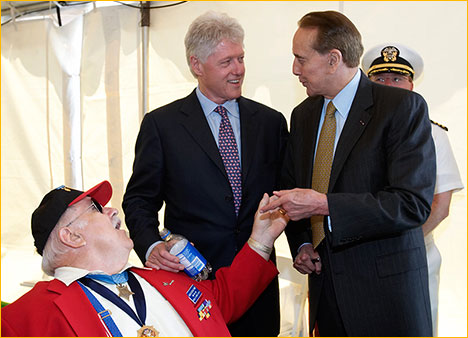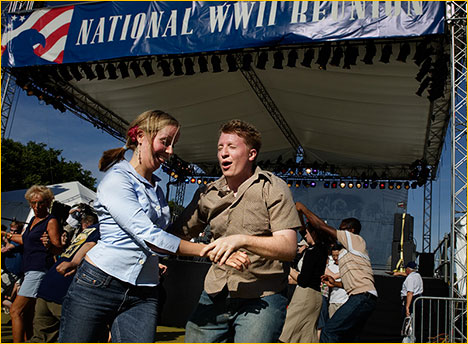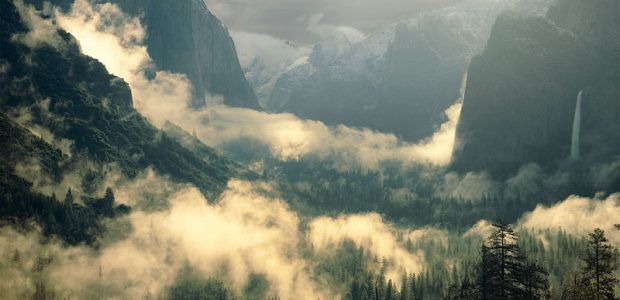Text and photographs by: Michael Tapes
Welcome to YAAARF! (Yet Another Article About RAW Format).
My passion for shooting RAW format began several years ago with the introduction of the Canon D30 into my life. Much to my surprise there was no software available that would allow an active photographer to reap the benefits of shooting RAW, which were known by very few. This lead to my co-developing YarcPlus, and of Chris Breeze offering BreezeBrowser, to fill the software void. Michael Reichmann and others spoke the unspeakable, that in fact the D30 when shot in RAW mode, was equal to and better than shooting film when the output was 8×10 or smaller.
Every day, I communicate with both pros and amateurs who have embraced the digital world and shoot JPEGS as standard practice. While many are successful shooters and business people in their own right, it pains me to think how much easier they could achieve equal, and in my opinion, superior results with less effort, by shooting RAW. I believe that there is an information gap and a fear factor about RAW that creates this disconnect. It is no secret that in my opinion it is mandatory practice to shoot RAW. I hope in this series of articles I can explain some truths that support my passionate belief.
______________________________________________________________
Let’s Get Started
Many of the other RAW articles have covered the basics well. I am guessing that you have read one or more of them and have a fundamental knowledge of what RAW is on a technical basis. If not, you may want to readMichael’s RAW articlebefore proceeding.
All digital cameras have the normal ability to shoot directly to JPEG, meaning that the end result of pressing the shutter release will be a JPEG image, of a size and quality level that is usually able to be set within the camera, and then written to the memory card. You will have an image which can be transferred and viewed on any PC or Mac, potentially further manipulating the image (with some amount of quality loss), or sent directly to a connected printer, dropped off or uploaded to the local photo-finisher (interesting name) or online lab.
Cameras that can shoot in RAW format (all DSLRs and many high-end point and shoot cameras) also have a setting on the camera which changes its capture mode to RAW. Instead of writing a final JPEG image to the memory card, a RAW data file is written, which consists of Black and White brightness levels from each of the several million pixel sites on the imaging sensor (along with some shooting data, and a small JPEG reference image or thumbnail). No high quality image file that can be viewed in the Mac or Windows operating system is produced. In fact, the actual image has not yet been produced. So the end result of pressing the shutter release when shooting in RAW is a data file that cannot even be viewed without running special software. Sounds pretty useless, huh? Read on.
So let’s review this.
A JPEG image can be:
• Viewed on any computer with no special software
• Viewed on many handheld devices designed for viewing
• Viewed on electronic picture frames
• Uploaded to the web for viewing or printing
• Brought to your local Wal-Mart (or whoever) and have prints back in an hour or less
• Printed directly onto many newer desktop printers from the memory card, even without a computer.
• And even brought into any editing program from the free Irfanview (www.irfanview.com), to the expensive (but the top in the field)Photoshop, for editing, retouching and manipulation (with a loss of quality, however).
• And more…
A RAW data file can be…
• Well, nothing…. Really…..without specific software designed to “develop” the specific RAW files from your specific camera into a useful image like a JPEG or TIF. (Note the use of the word “develop”).
Hmmmmm. Something sounds wrong here. “This guy advocates shooting RAW, using special software just to create that same JPEG that the camera could have made by itself?” Yes, that is what I am saying. However, the camera produced JPEG is fixed by a bunch of pre-set parameters, while the RAW processed JPEG is created bases on judgments made during the development process, allowing creative input after the capture but before the development to JPEG (or TIF).

Clinton-Dole – Washington DC May 2004
1DMkII RAW – 16-35F2.8L@32mm ISO 200 1/60 f4 Flash @-1EV
WB adjusted in Capture One
______________________________________________________________
Remember Film?
Let’s step back for a moment to the days not too long ago when we loaded film into our cameras (and many still do). What did we have when we completed our shoot. Not an image, but alatent image. In other words, according to Webster, an image that was “Undeveloped but capable of normal growth under the proper conditions”. And those proper conditions might have been Kodak D-76 or an Ilford chemical developer or whatever was right for that particular shoot. The camera had no influence on the development process because the only job of because the only job of the camera was to provide a light tight box for lens and film, and an apparatus to focus the lens and set an aperture, and then open the shutter for the proper amount of time. And you ended up with a latent image that had not been “touched” by the camera in any way at all except to have made the exposure of the composition that you created in the viewfinder. You had created an image that was “Undeveloped but capable of normal growth under the proper conditions”. So shooting RAW is like shooting film. You ended up with the equivalent of a film basedlatent image.
Let’s stay with film for a moment….
So we take our exposure on film and end up with a latent image. And we go back to our chemical darkroom, or send the film to our trusted lab, with the instructions that the day was a little gloomy so we want to do “that magic’” to this roll of film that we discovered by accident last year (that was when we discovered that by boosting the temperature of the developer by 1.5 degrees and agitating for 15 extra seconds at the end we got that extra contrast that made that gloomy day look magical).
The magic development is done with all the tricks, but this time the “magic” does not repeat, and the gloomy day looks even gloomier, and dreary, and boring! What a waste. “If only I had another copy of that latent image!”
Now back to digital
We shoot the gloomy day in JPEG, and the camera “develops” the image according to the camera settings that we made (our best guess). We view the JPEGs and our gloomy day is still gloomy. Since we only have a developed negative (the JPEG) and we cannot re-develop, we are forced to make adjustments in the printing of our negative (in our digital word this is done in Photoshop or other editor). Our adjustments must be minimal if full image quality is to be maintained. “If only I could return to the time of capture and change my camera settings”.
Shout Out Loud: Eureka!
We can! We shoot out gloomy day in RAW and end up with our latent image (RAW data file). We open our RAW conversion software, and while viewing the image we make real time adjustments to exposure, contrast, color, White Balance, and anything needed to put the magic back in out gloomy day. We then develop our RAW file into a JPEG or TIF that not only has our creative vision intact, but is a file of higher quality, because we were able to optimize the “development” using the adjustments available in the RAW conversion software that utilized all of the available data from the RAW file. And, we set the equivalent of our camera settings after the capture as opposed to guessing before. And we have not “touched” the RAW file which remains in tact.
If we are not pleased, or if we want to experiment with a different approach, we can develop again, because our latent image (RAW file) has not been altered in the development process. The RAW “latent image” file is available to us forever. We can develop this latent image again and again using as many techniques and/or developers as we want.
When you develop film it is a destructive process, where the latent image is physically changed to become the developed negative. The latent image is gone forever. The resultant negative is not able to be changed. With a RAW data file (latent image), the development is non-destructive, and we retain the latent image (the RAW data file) to be developed again if we do not like the results the first time around. And next year when new “developers” (updates of Capture One, Adobe Camera Raw, etc) come out, with improved image quality, we can go back to our archived RAW file (still a latent image) and develop it again with a higher quality image. I have developed hundreds of my old D30 RAW files using Capture One and have achieved greatly improved image quality compared with the Canon development software from back then.
______________________________________________________________
How many of you shoot RAW all of the time? Please raise your hands.
Ok, I see about 15% of your hands raised. Those of you with your hands at your sides….in my opinion you are incorrect. I believe that 100% of you are shooting RAW images, 100% of the time. OK. I am playing with you, but hear me out. When your camera is set to RAW, the picture is taken, and a RAW file is produced, and then it is written to the media card. However, guess what? When your camera is set to JPEG, the picture is taken, and a RAW file is produced (in memory), and then the camera goes ahead and develops the RAW file into a JPEG and discards the RAW data. So here is the RAW Truth…..
JPEG Shooter– The camera captures RAW data, and it then develops the image into a JPEG or TIF. The RAW data is discarded. The photographer gets the camera’s rendition of the file and is essentially stuck with it unless a loss of quality is to be tolerated through editing. And this may be OK if all the parameters like exposure and White Balance were properly set in the camera. But in the real world that is rarely the case 100% of the time.
RAW Shooter– The camera captures RAW data, and it then saves the RAW data onto the memory card for future development(s). The RAW data (ALL of the captured data) is preserved. The photographer gets the full potential of the image, and will maintain that potential forever by archiving the RAW file. (With many cameras, you can shoot RAW + JPEG which saves the JPEG and RAW files to the memory card. Perfect except for the extra space this consumes, but a great transitional mode while getting used to or experimenting with shooting RAW).
RAW Truth #1
The JPEG shooter and the RAW shooter both capture RAW data. The JPEG shooter uses the camera as their RAW converter (developer) and is willing to give up the potential to do a better development in the future. The RAW shooter, saves the RAW data (and maybe a camera developed JPEG as well) so that the potential of the image can be maximized by using his or her RAW converter of choice. Or by developing a critical image on several RAW converters to find which one produces the best rendition of a particular image the best (Neither Capture One or Adobe Camera RAW, or others, will yield the best rendition on ALL images, so having more than one “developer” (RAW converter) is a common practice and a good idea. One main converter for best workflow and image quality, and another (or more) for those certain images that might need a different twist or turn.

Dancers RAW -– Washington DC may 2004
1DMkII 24-70F2.8L@24mm ISO200 1/400 f10
WB adjusted in Capture One
Two developments done to bring back highlights in the banner that were blown out
Normal and dark developments then merged in Photoshop
______________________________________________________________
In conclusion…
Shooting RAW allows any photographer to maximize the potential for image quality, both now and in the future. I would suggest that one never knows…
• When that once in a lifetime shot will come into our viewfinder.
• When our White Balance will be accidentally set wrong
• When we have set the camera “settings” inappropriately (ever try to remove too much sharpening from a camera JPEG)?
• When our client will want a 16×20 from an underexposed capture.
• When our ISO is accidentally set wrong.
• When the money shot smacks us in the face and we are not full prepared
• When mixed lighting will produce havoc with our color
• We simply need the maximum from a specific shot or series of shots
By preserving the RAW data when we shoot, we offer ourselves the best chance of creating the vision that we first saw in the viewfinder. Shooting “JPEG” limits the technical potential of every photograph that we take.
The RAW Truth can be discussed on the discussion forums atwww.RawWorkflow.com, and here at theLuminous-Landscape.
______________________________________________________________
About The Author
Michael Tapeshas been an amateur and part-time professional photographer for more than 35 years. He is the RAW Workflow consultant and part time photographer with MH Concepts (www.mhconcepts.com). He has studied with Ben Lifson (a contributor to the Luminous-Landscape). Since starting his RawWorkflow.com web sites, he has developed or contributed to the development of YarcPlus (early Canon Raw Converter), Archive Creator, Capture One and WhiBal. In addition to selling and providing the US support forum for Capture One, he is retained by Phase One as the Senior Software Consultant for Capture One RAW conversion software. Michael is currently working on a RAW workflow instructional DVD and can be reached via the support forum atwww.RawWorkflow.com.
You May Also Enjoy...
Cload Bands – Antarctica
Please use your browser'sBACKbutton to return to the page that brought you here.
Thoughts on Ansel
William Neill and Ansel Adams "...It is difficult to explain the magic: to lie in a small recess of the granite matrix of the Sierra

